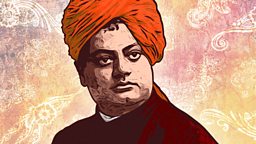7 Surprising Things India Has Given The World
India… Famous for its culture, cuisine and diversity, the vibrancy and dynamism of the country is recognised globally. The world’s second most populous nation has been the birthplace of some of history’s great leaders, pioneering inventors, and visionaries.
To celebrate the second series on Radio 4 of Incarnations, a programme that explores the lives of 50 of the most influential people in Indian history - we thought we would share some of the great inventions and innovations that you will almost certainly have used - but may never have realised their origins in South Asian culture.
Yoga

Go to almost any gym and you will find a Yoga class full of experts stretching their limbs perfectly, and beginners doing their best not to make complete fools of themselves. The practice is believed to have originated in the pre-Vedic period of Indian history (ca. 1500 – ca. 500 BCE) and is deeply rooted in the religions of Buddhism, Hinduism, and Jainism.
The spread of Yoga to Western culture was significantly aided by Swami Vivekananda (1863 -1902). Find out more about Vivekananda by listening to Incarnations.
Radio Broadcasting
The Nobel Prize winning engineer and inventor Guglielmo Marconi is usually credited as the founder of radio broadcasting; however, it was the Bengali scientist Jagadish Chandra Bose who conducted an earlier experiment using millimetre range wavelength microwaves to ignite gunpowder and ring a bell. This was then followed four years later by his invention of the ‘iron-mercury-iron coherer with telephone detector’ – the forerunner of wireless radio communication. Sir Neville Mott – 1978 Nobel Prize Winner for Physics - said that Bose was “sixty years ahead of his time.”

Fibre Optics
Can you imagine a world where you couldn’t look at cute videos of your friend’s cat or find the latest offers on male ‘enhancement’ products in your email inbox? Of course, in the pre-internet world none of this was possible, but, apart from being enabled by fibre optics, their use extends beyond the web and into transport, telephone communication, and the medical world.
Narinder Kapany, a physicist and entrepreneur born in Moga, in the Punjab, is widely credited as being the ‘father of fibre optics’. Between 1955 – 1965 he was the lead author of many technical papers, one of which was published in Scientific American (1960); it helped to establish the term ‘fibre optics’ – in the process acknowledging Kapany’s pioneering research.
Snakes and Ladders

Snakes and ladders: a morality test
Catherine Howell from the V&A looks at a Victorian and early Indian version of the game.
Trade-in those hi-tech games consoles and computers for the joy of climbing up ladders and sliding perilously close to pesky snakes. Once described as ‘England’s favourite indoor sport’, its origins stem from a game used to teach Hindu values to children; the ladders representing virtue and the snakes’ evil. Historically known as ‘Mokshapat’ or ‘Moksha Patam’, the original goal of the game was to get to Vaikuntha (heaven); however, the version imported from colonial India in the late 19th Century had the religious and moral aspects removed for the British market.
I was totally surprised by how it has impacted everybody. I mean, my name became a common name - at least at schools and in technical communities.Ajay Bhatt - in an interview with CNN.
The USB Port
The USB (Universal Serial Bus) port revolutionised the way in which we connect our electronic devices; and also changed the life of the man who helped create it – namely Ajay Bhatt. It was during the 1990’s when Bhatt and his team began work on the device that became a key feature of computer connectivity towards the end of the decade. The Indian born inventor gained public notoriety after appearing in a television advert for Intel in 2009 and for winning the European Inventor Award in the Non-European countries category in 2013.
Flush Toilets
It’s only after one’s been camping and had to venture deep into the woods to further acquaint oneself with nature, that one truly appreciates the necessity of the flush toilet. Archaeological evidence has shown that the idea of a flushing toilet was pioneered by the Indus Valley Civilisation (ca. 3,300 - ca. 1,300 BCE). The Bronze Age civilisation settled in modern day Kashmir, where innovative reservoirs and sewage systems connected to individual houses have been discovered.
Shampoo
It makes you feel good, look respectable, and smells delightful! A shower without shampoo would be like afternoon tea without any biscuits or a night out without cheesy chips for the walk home – simply unthinkable! The earliest form of shampoo was made in 15th Century India by boiling Sapindus – a small shrub which is part of the Lychee family – and adding aamla - a type of Indian gooseberry – as well as other herbs and spices. It was British colonial traders that introduced shampoo into Europe, but it still took several hundred years before it was readily used and available for the general population.
-
![]()
Incarnations
Incarnation explores the history of India told through the lives of 50 phenomenal people. Discover more about Swami Vivekananda and his impact on Hinduism and Yoga.




